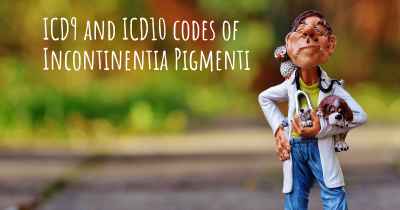What is the prevalence of Incontinentia Pigmenti?
How many people does Incontinentia Pigmenti affect? Does it have the same prevalence in men and women? And in the different countries?

Incontinentia Pigmenti (IP) is a rare genetic disorder that primarily affects females, with an estimated prevalence of approximately 1 in 40,000 to 1 in 100,000 individuals. It is characterized by skin abnormalities, dental issues, eye problems, and neurological complications. IP is caused by mutations in the IKBKG gene and follows an X-linked dominant inheritance pattern. The severity and specific symptoms can vary widely among affected individuals. Early diagnosis and appropriate management are crucial for optimizing outcomes and providing necessary support to individuals with IP.
Incontinentia Pigmenti (IP), also known as Bloch-Sulzberger syndrome, is a rare genetic disorder that primarily affects females. The prevalence of IP is estimated to be approximately 1 in 40,000 to 1 in 100,000 individuals worldwide. This condition is inherited in an X-linked dominant pattern, meaning that it primarily affects females but can also be seen in males, although with more severe symptoms.
IP is characterized by skin abnormalities that develop in distinct stages. In infancy, affected individuals may present with a blistering rash that evolves into wart-like skin growths. As they grow older, these skin changes gradually fade and are replaced by swirling patterns of hyperpigmentation. Other symptoms may include dental abnormalities, hair loss, eye abnormalities, and neurological issues.
Due to the X-linked dominant inheritance pattern, males with IP often experience more severe symptoms and have a higher mortality rate. The exact cause of IP is a mutation in the IKBKG gene, which is responsible for producing a protein involved in regulating gene expression and immune responses.
Diagnosis of IP is typically based on clinical features and confirmed through genetic testing. Although there is no cure for IP, treatment focuses on managing symptoms and preventing complications. This may involve a multidisciplinary approach, including dermatologists, ophthalmologists, dentists, and genetic counselors.
In conclusion, Incontinentia Pigmenti is a rare genetic disorder primarily affecting females, with an estimated prevalence of 1 in 40,000 to 1 in 100,000 individuals worldwide. It is characterized by distinct stages of skin abnormalities and can also involve other organ systems. Early diagnosis and appropriate management can help improve the quality of life for individuals with IP.








